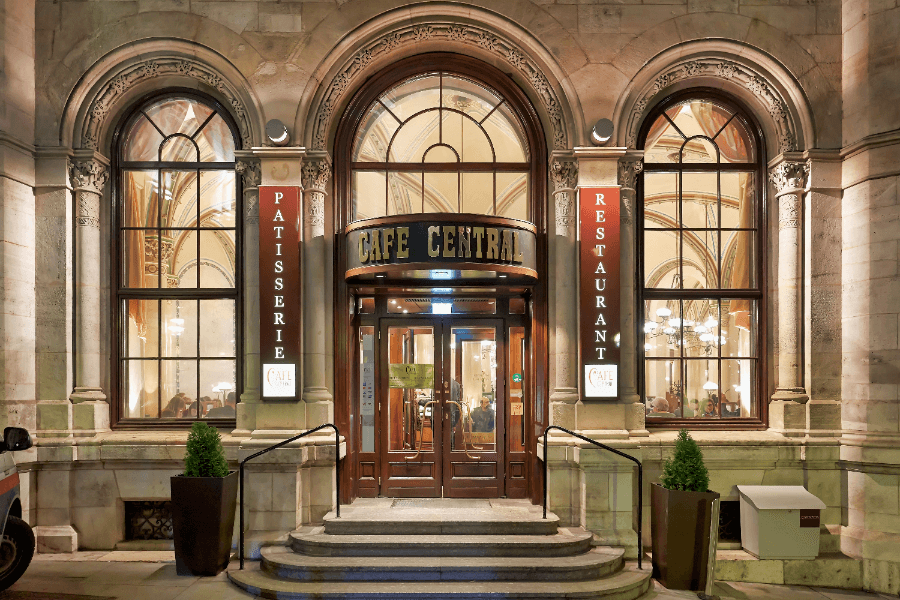📑Table of Contents:
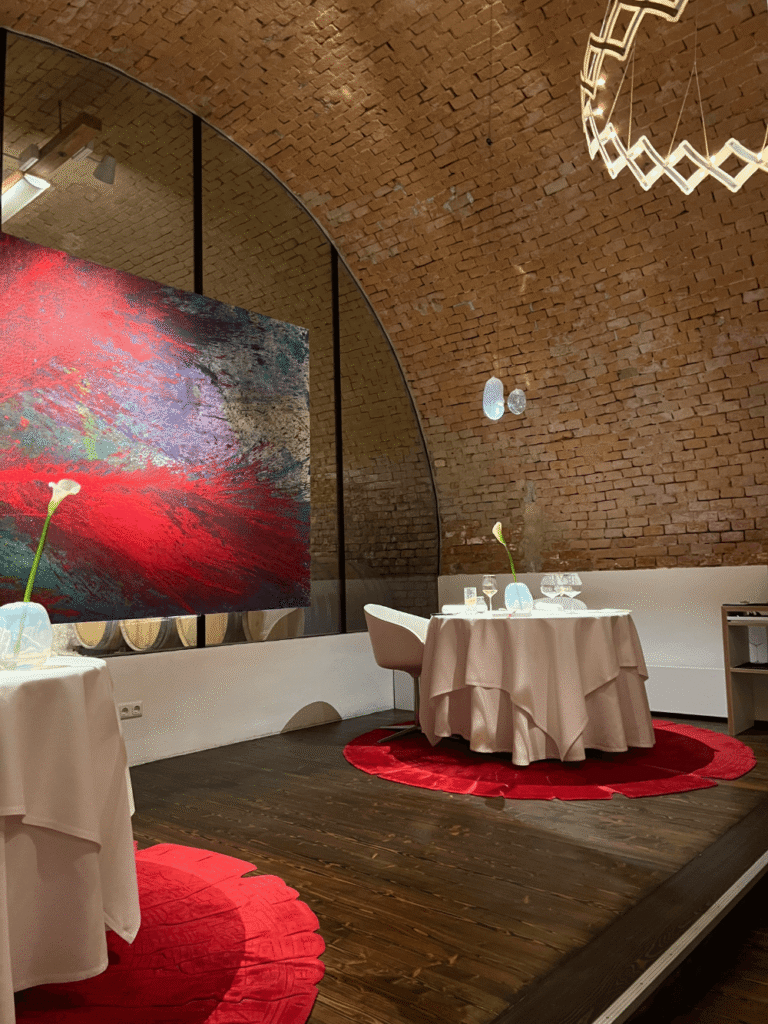
Tucked beneath the quiet residential vineyards of Vienna’s 19th district lies one of Europe’s most ambitious restaurants. You wouldn’t expect to find Austria’s only three-Michelin-starred kitchen, Amador, buried under a former wine estate. There’s no grand façade. No sweeping view. No glowing signage screaming luxury. Just a discreet door, a name, and a short walk down into what feels like a forgotten cellar.
But inside, something extraordinary happens.
Restaurant Amador, the brainchild of chef Juan Amador, is more than just a fine dining destination. It’s a bold culinary statement. It challenges assumptions. It strips away distractions. And it serves some of the most daring and technically precise food in all of Europe.
I visited this hidden institution with expectations set sky-high. Here’s the full breakdown—atmosphere, service, menu, execution, and whether it lives up to its legendary reputation.
Setting the Scene: From Wine Cellar to Fine Dining Temple
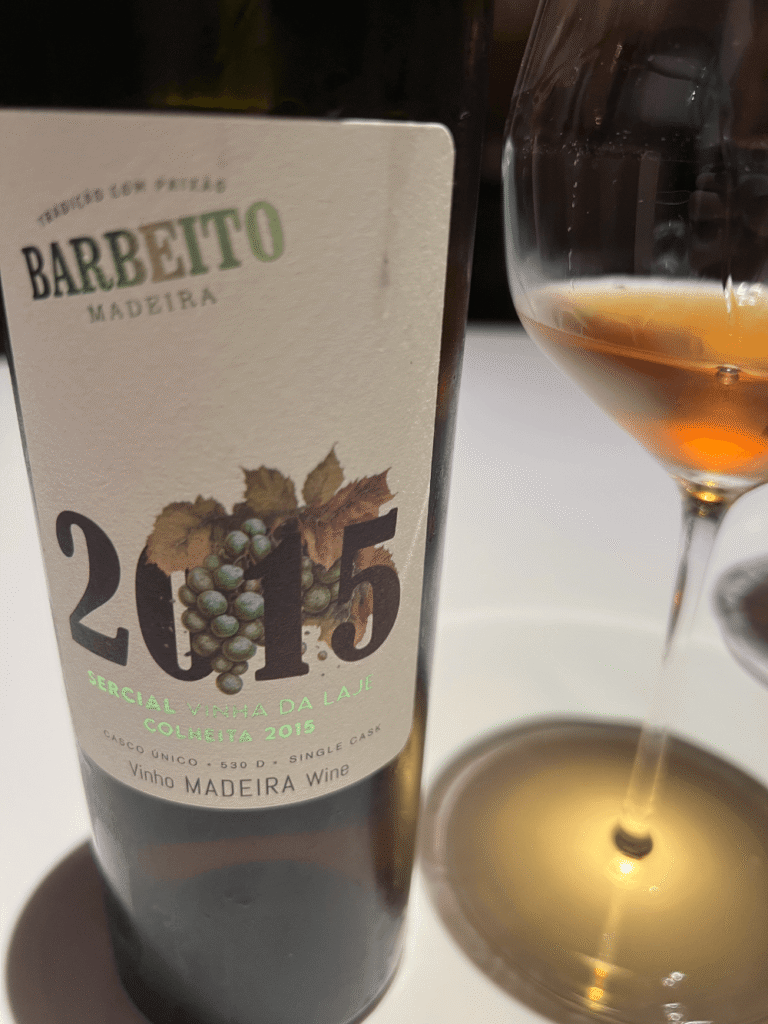
The location alone sets Amador apart. Rather than situating itself in Vienna’s historic center, the restaurant makes its home in a converted wine cellar in Döbling, a district more associated with vineyards than haute cuisine.
The interior doesn’t chase Instagram trends. There’s no velvet upholstery or gold accents. Instead, arched exposed-brick ceilings, slate tables, and gentle spotlighting create a mood of calm concentration. The dining room is quiet, not hushed awkwardly, but intentionally silent, as though asking you to listen more closely to what’s on your plate.
There are just a few tables. Staff move silently. Guests speak softly. The focus here is laser-sharp: no distractions—just dining.
Chef Juan Amador (Precision Meets Risk)
Born in Germany to Spanish parents, Juan Amador is one of the few chefs to earn three Michelin stars in two different countries. His style is hard to label. At times molecular, at others rustic. He fuses German technique with Spanish boldness and Asian influence.
Amador doesn’t build a meal for comfort. He builds it for impact. Every course dares you to think, to taste differently, to question balance and contrast. His food demands attention—and rewards it.
This isn’t a chef chasing trends or copying others. This is a signature voice, uncompromising and fearless.
A Full-Spectrum Experience (The Menu)

There’s only one menu available: the tasting experience. It’s long. It’s complex. And it’s unforgettable.
The meal begins with a sequence of tapas-style starters, then unfolds into mains, interludes, desserts, and petit fours. You can add wine pairings or order from the extensive cellar.
The Opening Barrage
The first five to seven courses arrive quickly. They’re small, inventive, and visually stunning.
- Caviar with beurre blanc ice cream: Cold, rich, salty, acidic. An opening move that resets your palate and your expectations.
- Foie gras taco with passionfruit gel: A paper-thin shell holding unctuous liver and bright tropical acidity.
- Wagyu tartare with dashi jelly: Umami-heavy, clean, and finished with micro herbs for lift.
- Pumpkin espuma with chorizo oil: Comforting and clever, served in a small ceramic pot.
Each bite is meant to shock the senses—not through gimmickry, but through calculated contrast.
The Core Dishes
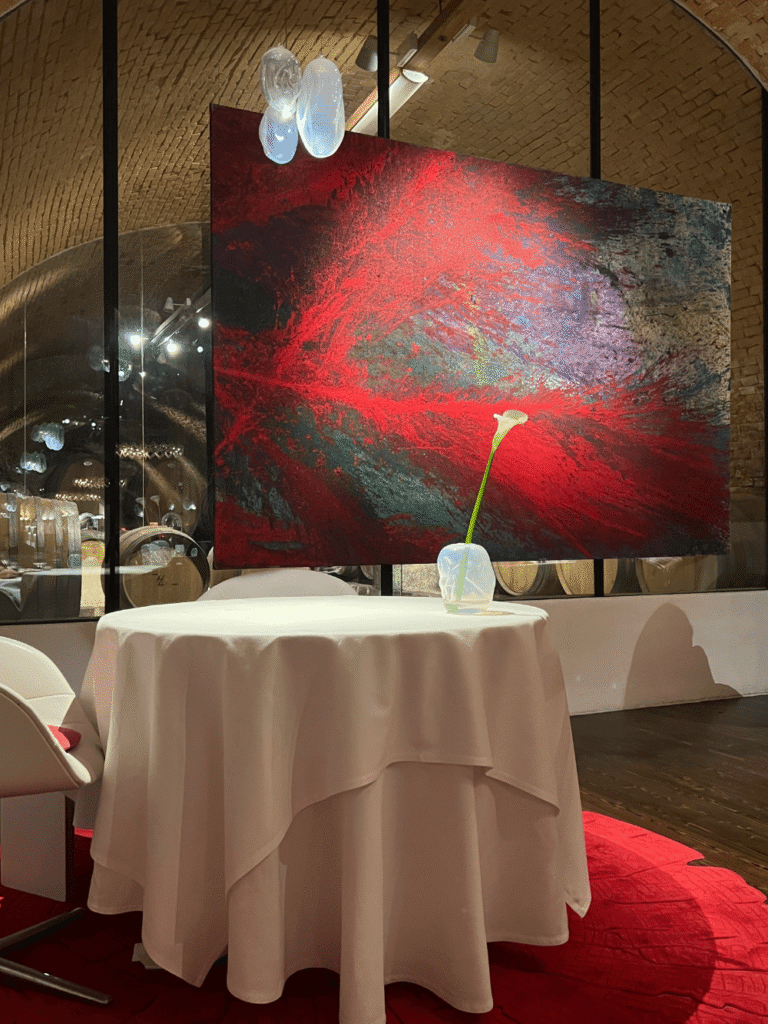
After the fireworks of the opening, the menu slows its pace. The core courses are larger, layered, and emotionally deeper.
- Langoustine with veal tongue and celery root: Soft meets crisp, land meets sea. The tongue is melting, the langoustine lightly charred. A genius pairing.
- Turbot with mint-pea velouté and black garlic: A study in green. Earthy, fresh, funky, clean. It’s like spring in a bowl.
- Iberico pork with smoked potato foam and rosemary jus: The highlight of the evening. A dish so perfectly cooked, so balanced in aroma and taste, it borders on spiritual.
Each dish challenges the diner, but always respects balance. There’s acidity, fat, crunch, sweetness, salt, bitterness—all tuned like an orchestra.
Dessert Course: Beautiful, If Less Daring
Dessert didn’t quite reach the same level of brilliance.
- Fig textures with tonka bean ice cream: Visually stunning but flavor-wise, muted. The tonka came through well, but the fig lacked dimension.
- Yuzu sphere with meringue and almond soil: Brighter, more focused. This dish had a sharper contrast and delivered a clean, citrusy finale.
Where the mains thrilled with innovation and intensity, dessert felt more restrained—well executed, but not quite as exciting.
Petit fours followed, and they were delightful: small, delicate, and impeccably made. Liquid-filled bonbons, fruit jellies, and nutty financiers ended the night on a sweet, refined note.
The Wine Pairing (Expertly Curated and Full of Surprises)
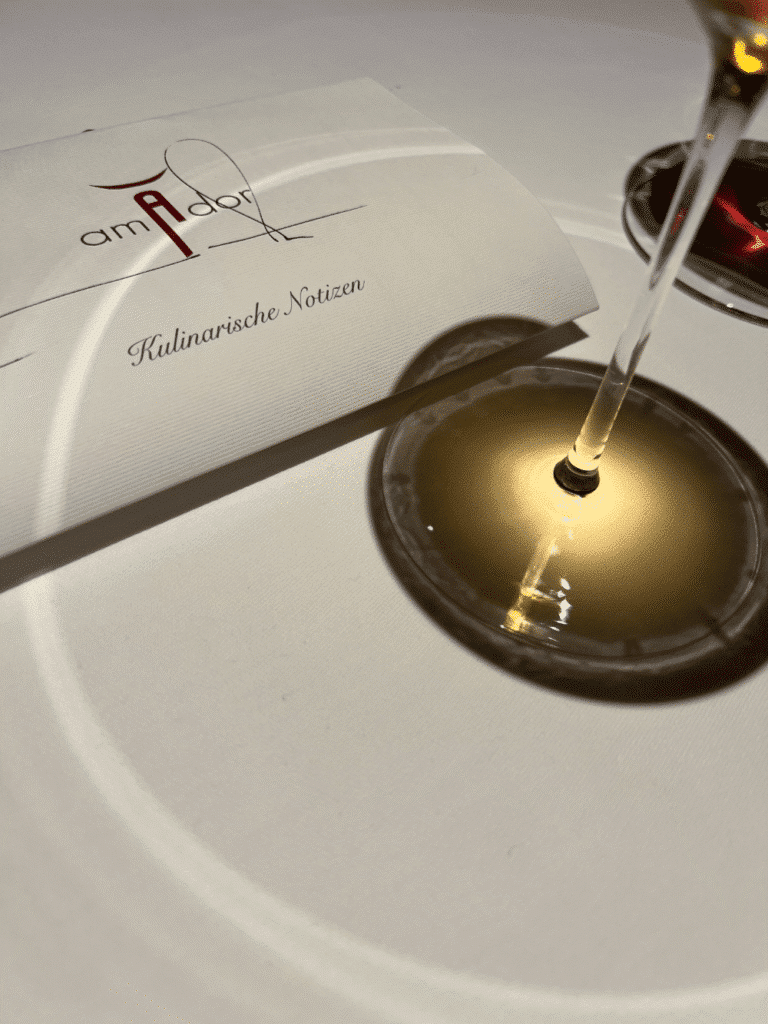
The wine program is one of the best in Austria. With over 1,000 labels, including rare vintages and avant-garde producers, the list is a playground for oenophiles.
The sommelier’s pairings weren’t safe—they were stories in themselves.
- A skin-contact Austrian orange wine with foie gras? Brilliant.
- A vintage German Riesling with langoustine? Perfectly tuned.
- A deep 1995 Rioja with Iberico pork? Sublime.
Every pour brought context to the dish. The sommelier’s explanations were clear and enthusiastic. He didn’t just serve wine—he wove it into the evening’s rhythm.
Service: Technical Precision, Human Warmth
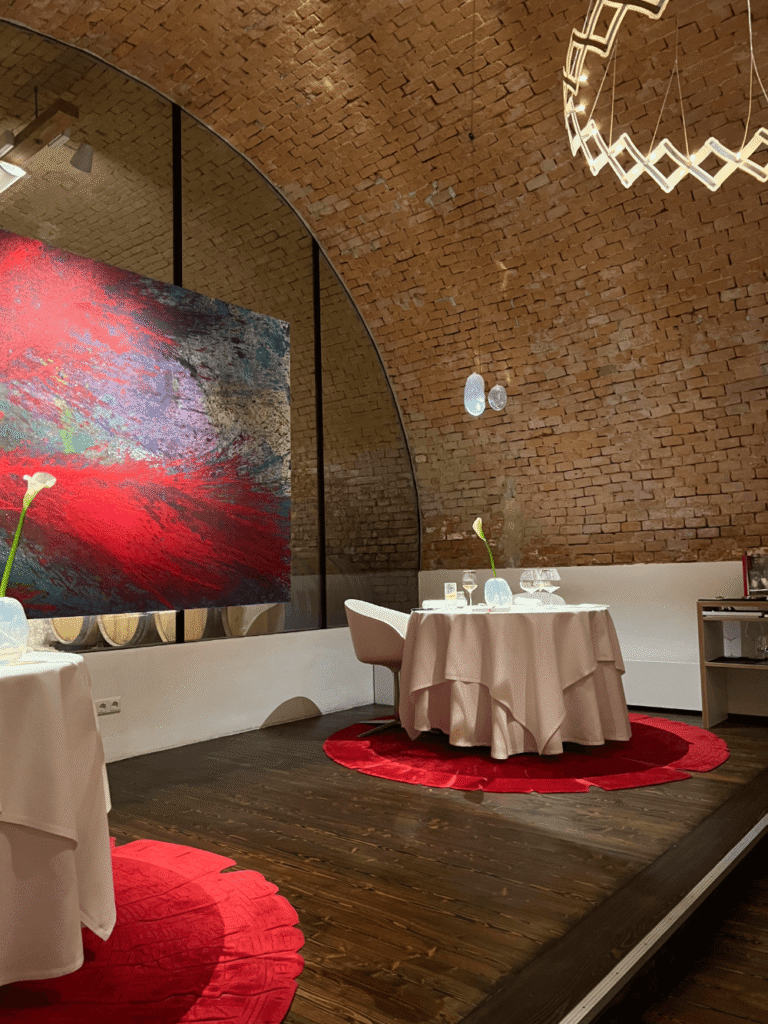
It’s easy for service in three-star restaurants to become robotic. Not here.
The staff at Amador is warm but reserved. Efficient but personable. They explain each dish with clarity and energy, and they adapt effortlessly to the table’s pace.
- Courses arrived in smooth sequence.
- Plates were cleared without interruption.
- Glasses were topped up quietly.
- Special dietary notes were remembered and honored.
When Chef Amador visited the table after dessert, he was soft-spoken and humble. No theatrics—just a quiet thank-you and a handshake.
Pricing: Expensive, Yes. But Warranted
Let’s talk numbers. A night at Amador isn’t casual.
- Tasting Menu: €260
- Wine Pairing: €190
- With extras and tip: €450–€550 per person
Yes, it’s expensive. But you’re not just paying for food. You’re paying for artistry, execution, and rarity. Very few restaurants in the world offer this level of creativity with such consistency.

Final Thoughts
Restaurant Amador is not about comfort food. It’s about precision, surprise, and experience. Every course is a composition, a challenge, and is engineered to stay with you.
It’s not for everyone. If you’re looking for cozy, rustic charm or traditional Austrian dishes, this isn’t your place. But if you want to be pushed—to see what happens when a chef goes all in, without compromise—then this is a must.
Juan Amador isn’t cooking for Instagram or the masses. He’s cooking because he has something to say. And if you’re willing to listen, you’ll taste something rare.
⭐ Final Score: 4.8 / 5
Perfect for: Gastronomic travelers, food lovers, special occasion diners
Not for: Casual diners, kids, or anyone expecting schnitzel
